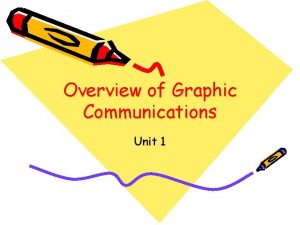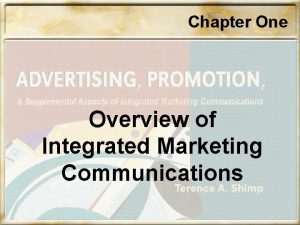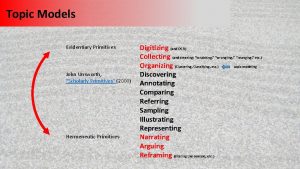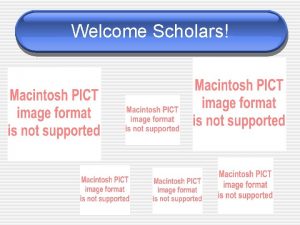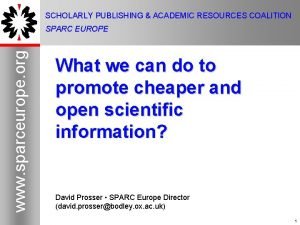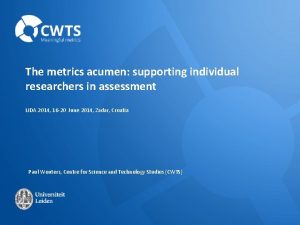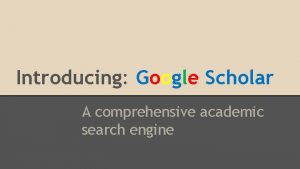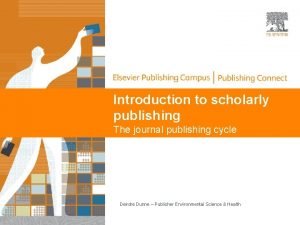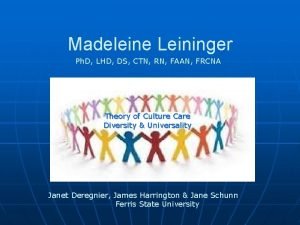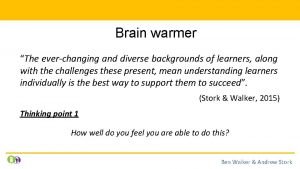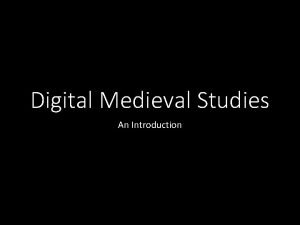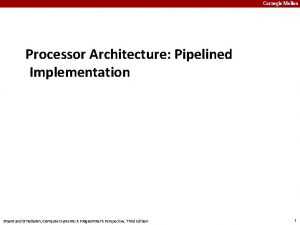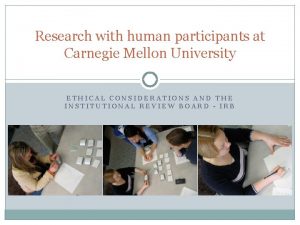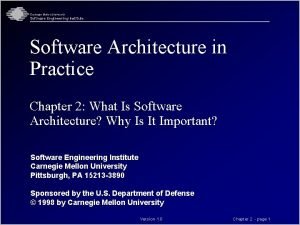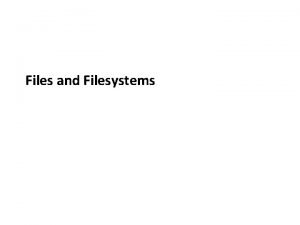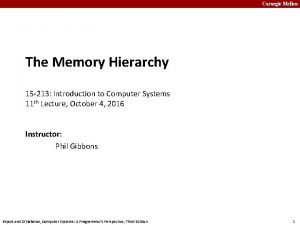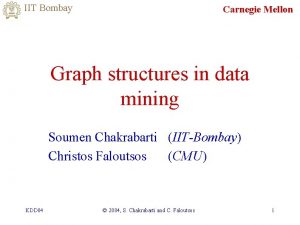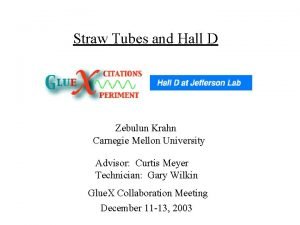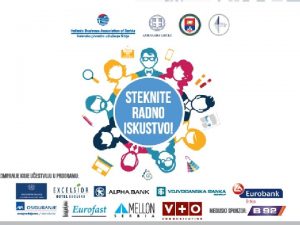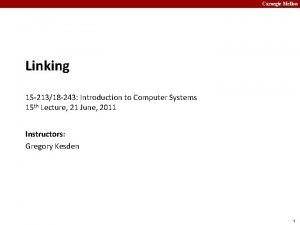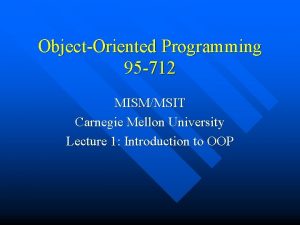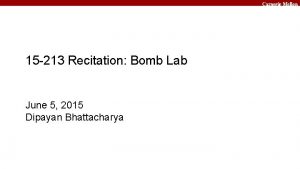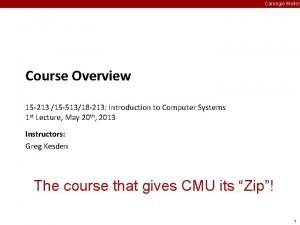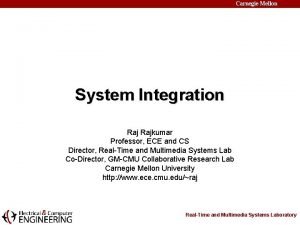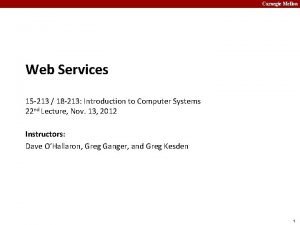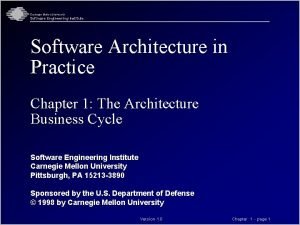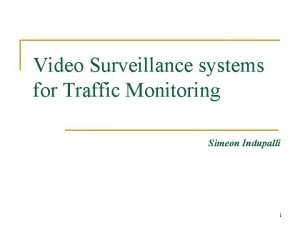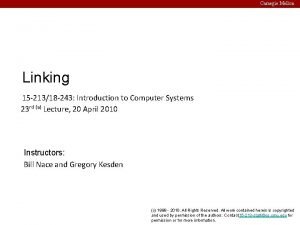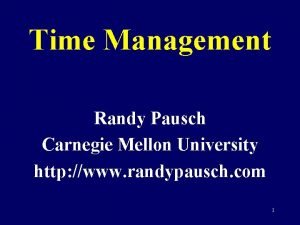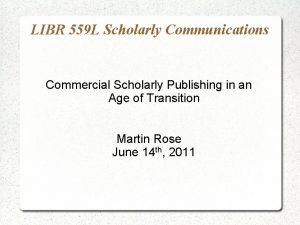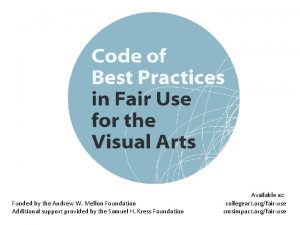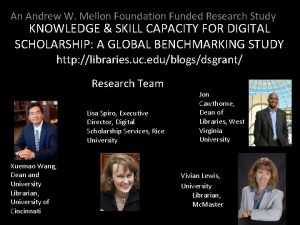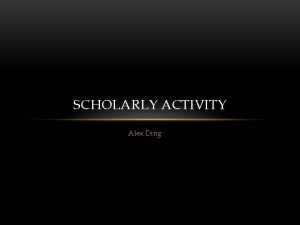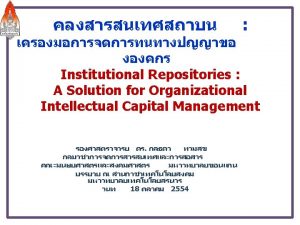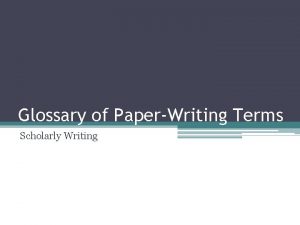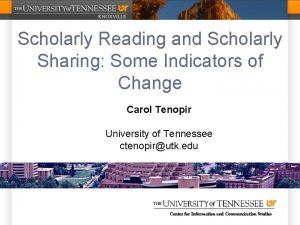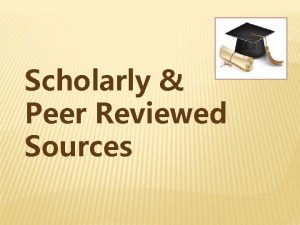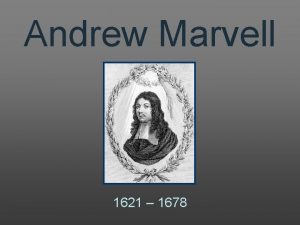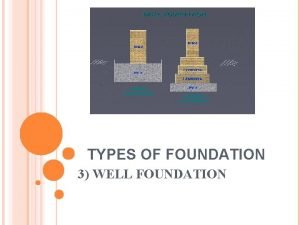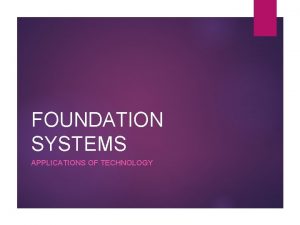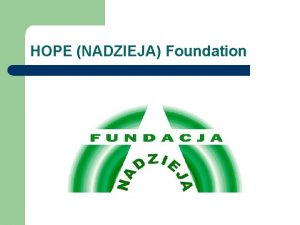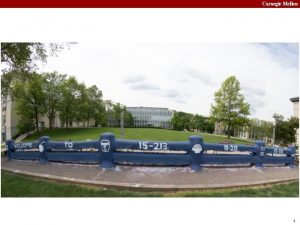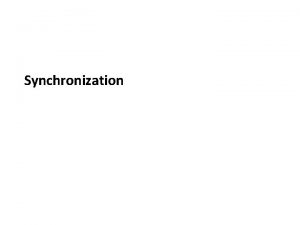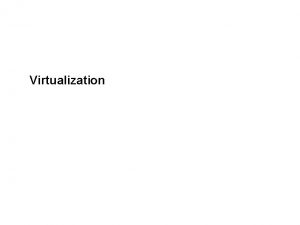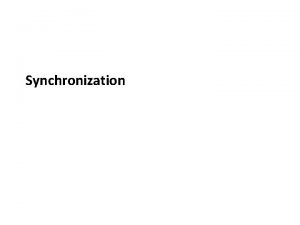The Andrew W Mellon Foundation Scholarly Communications Overview































- Slides: 31

The Andrew W. Mellon Foundation

Scholarly Communications Overview • Promotes the cost-effective creation, dissemination, accessibility, and preservation of high-quality resources in humanistic studies broadly defined. • Focuses broadly on all stages in the life cycle of scholarly resources. • Complements fellowships and other kinds of support for research and teaching. • Since 2001, steady increase in funding for complex scholarly digital resources.

Digital Resources Sustainability • All institutions that apply for support for digital resources must show they plan to sustain any aspects of those resources that are developed with Mellon funds. • Because technology standards change quickly and digital files can become corrupted easily, digital resources must be maintained carefully and consistently. Such care requires long-term funding and commitment of institutional resources.

Sustainability Funding Cycles • In order to assure that grantees develop sustainable resources, the Foundation funds scholarly digital resource projects in phases, during which grantees are monitored carefully:

Sustainability Funding Cycles – Planning Phase – Developmental Phases • Formal sustainability planning usually takes place during development • Ongoing evaluation • Iterative development fueled by user response – Implementation Phase • Product launch • Further iterations in response to users • Sustainability of operations

Digital Resources Sustainability Considerations • Aspects of Sustainability – Intellectual leadership – Preservation – Access – Financial – Management – Governance – Rights

Sustainability Intellectual Leadership The touchstone of sustainability is the scholarly value of a project. Therefore, Scholarly Communications staff consider scholarly digital resource projects that: • Apply technology to forms of scholarly communications in order to improve quality, lower costs, speed up work, open new perspectives, or make work possible that would otherwise be difficult or impossible

Sustainability Intellectual Leadership • Explore the application of specific technologies in new and interesting ways and demonstrate how the application could advance serious research • Involve scholars in planning from the beginning • Are of sufficient scope and depth to attract use by researchers

Sustainability Intellectual Leadership • Are fueled by specific research projects • Invoke clearly defined selection criteria designed to build coherent collections • Create institutional collaborations • Typically, content for scholarly digital resources is taken from a number of sources. • The Foundation resists requests by libraries and archives to digitize entire collections unless such a project is scholar-led and managed.

Digital Resources Sustainability Considerations • Aspects of Sustainability – Intellectual leadership – Preservation – Access – Financial – Management – Governance – Rights

Sustainability Content Preservation and Access • Digital content must meet current standards or conform to best known practices for preserving digital files for an indefinite period – Master files are uncompressed or compressed using lossless technique – Technical, administrative, and descriptive metadata – Protected storage for master files, mirror sites

Sustainability Content Preservation and Access – Institutional commitment to file and metadata preservation, including preservation policy, and capability to store files and migrate them to new formats (or relationship with service provider) – Project directors and institution commit to providing wide access to content for the long term, either at no cost or for a fee, either directly or through service provider

Sustainability Content Preservation and Access • Scholar project managers collaborate with librarians and information technologists to provide users with high quality content and tools in accordance with users’ needs. • User needs are determined by studies that might involve small groups who evaluate prototype resources; slightly larger pilot groups of scholars; institutional beta testers; or users who are surveyed periodically after the full launch.

Sustainability Content Preservation and Access – Grantees must show that they have the rights to distribute the content, and in the case of copyrighted content, they must undertake a legal analysis and formulate a policy and procedures for rights clearance and distribution. – The Foundation reviews model contributor and user agreements during the proposal process.

Sustainability Technology and Software • If institutions develop open source technology with grant funds, they must agree to maintain the technology and provide technical support for at least five years after the end of the grant period. • If institutions do not develop open source technology, they must agree to give the Foundation a non-exclusive, perpetual, royaltyfree right to distribute the technology to the academic and non-profit communities (more discussion under Rights).

Sustainability Technology and Software • Most of the Foundation’s digital project grants involve the development of software tools that enable users to do far more than simply search and view content. – Public and private annotation, virtual workspaces, wikis, enhanced images, side-by-side viewing, text mining, data visualization, GIS, Quick-Time Virtual Reality; links among different formats • Tools require significant resources to develop and maintain over the long term.

Digital Resources Sustainability Considerations • Aspects of Sustainability – Intellectual leadership – Preservation – Access – Financial – Management – Governance – Rights

Sustainability Business Planning • Institutions that receive grants to develop digital resources must develop a viable business model that enables the resource to become selfsustaining beyond the completion of the grant. • Grantees hire external consultants or work with business school faculty.

Sustainability Business Planning • Business plans include – SWOT analysis: Strengths, Weaknesses, Opportunities, and Threats – Structure: project or independent organization? – Sources of support – Revenue and expense projections for several years beyond the grant period – Pricing and distribution plans (if the resource is distributed on a fee basis) – Management – Governance

Digital Resources Financial Support • Considerations – Complexity of architecture and functionality – Static vs. dynamic resource – Rightsholders might require royalty payments • Sources of Financial Support – Resource maintenance costs are absorbed into the institution’s budget – Institutional memberships – Sponsorships – Advertising – Partnerships

Sustainability Financial Support – Subscriptions • • For entire resource For premium content only For special functionality or higher quality Sliding scale based on institutional size or type – Services • • Technology maintenance Digitizing materials for other projects Consultation Other services

Sustainability Financial Support – Community contributions • Open source technology development • Content – Grants for capital projects once the resource can sustain its operations – Endowment (the Foundation does not endow these kinds of resources)

Sustainability Distribution • Distribution is often too complex for academic institutions to manage, so vendors are used. • Vendors usually expect to obtain exclusive distribution rights. • The Foundation resists exclusive distribution arrangements: – Philanthropic funds enable a commercial vendor to benefit exclusively from an academic resource. – Vendor controls pricing as well as look and feel of resource

Sustainability Management • Management – – Host institution Staffing levels Monitoring of resource Determining new content, tools and other technology revisions – Relationships with external service providers – Implementation of sustainability planning

Sustainability Management – Relationships with advisory committees, content contributors, users – Outreach to scholars – Fundraising • For complex resources, dedicated management staff or course buy-outs for faculty managers are needed

Sustainability Governance • Governance – Advisory committee(s) might consist of scholars, librarians, and information technologists – In the case of a small grantee organization, the board of directors could govern the resource – Boards and committees advise on the general direction of the resource, sustainability strategies, financial issues, content development policies, tools, etc.

Sustainability Intellectual Property • Institutions developing digital resources with Foundation support must address intellectual property issues that pertain to the digital distribution of content or technology • Legal analysis of rights issues pertaining to content • Foundation usually reviews contributor and user agreements

Digital Resources Intellectual Property • Grantees developing content or technology with Foundation funds sign an intellectual property agreement – Grantee owns technology and/or content that it develops – Open source (technology)/free Web access (content) or – Foundation is given non-exclusive, perpetual, royaltyfree rights to distribute technology and/or content developed with Foundation funds for educational, notfor-profit, or cultural purposes – Foundation has right to approve distribution and pricing

Digital Resources Intellectual Property • Rationale – Foundation should not pay license fees for resources that it has already paid to develop – Foundation might develop projects or organizations (e. g. , JSTOR, ARTstor) that could use technology or content developed by other grantees – If resource can no longer be managed or distributed, Foundation can take possession of it and distribute it to another entity – IP agreement prompts grantees to think carefully about issues of rights and sustainability

Intellectual Property Policy • http: //www. mellon. org/about_foundation/policies/ IPPolicy. pdf

Suzanne M. Lodato Associate Program Officer Scholarly Communications sml@mellon. org http: //www. mellon. org
 Overview of graphic communications
Overview of graphic communications Overview of integrated marketing communications
Overview of integrated marketing communications Csun scholarly articles
Csun scholarly articles Pmp communication model
Pmp communication model Scholarly primitives
Scholarly primitives Habits of a scholar
Habits of a scholar Scholarly publishing and academic resources coalition
Scholarly publishing and academic resources coalition Scholarly acumen
Scholarly acumen Scholar advanced search engine
Scholar advanced search engine Scholarly articles
Scholarly articles Madeleine leininger scholarly articles
Madeleine leininger scholarly articles Scholarly tutoring
Scholarly tutoring Scholarly
Scholarly Frax
Frax Carnegie mellon university research participants
Carnegie mellon university research participants Carnegie mellon software architecture
Carnegie mellon software architecture Carnegie mellon fat letter
Carnegie mellon fat letter Carnegie mellon
Carnegie mellon Carnegie mellon
Carnegie mellon Mellon tubes
Mellon tubes Mellon serbia iskustva
Mellon serbia iskustva Mellon elf
Mellon elf Mism carnegie mellon
Mism carnegie mellon Bomb threat carnegie mellon
Bomb threat carnegie mellon Carnegie mellon
Carnegie mellon Carnegie mellon
Carnegie mellon 18-213 cmu
18-213 cmu Carnegie mellon software architecture
Carnegie mellon software architecture Carneigh mellon
Carneigh mellon Cmu pitt computational biology
Cmu pitt computational biology Mellon elf
Mellon elf Randy pausch time management
Randy pausch time management
